[ad_1]
Baldur’s Gate 3’s multiclass system has me giddy to get busy crafting some type of tousled new sort of man out of the part elements of Dungeons & Dragons like I did in CRPGs of yore, a Fighter / Mage / Artificer / Hierophant / No matter, man. Multiclassing has at all times been synonymous with getting probably the most out of those video games for the extra grognardy form of RPG-liker.
D&D’s multiclass guidelines will allow you to mix a number of Baldur’s Gate 3 courses collectively right into a hybrid that is extra highly effective, or perhaps simply extra enjoyable, than both individually. You are additionally strolling a tightrope, risking a watered down character should you do not handle a cautious steadiness of how a lot to put money into every class and when. Within the first a part of this information, I will go over the essential guidelines and finest practices of multiclassing, however you’ll be able to skip to the second part for a group of multiclass builds and multiclass concepts.
Be aware: Pre-release, this information is predicated on Baldur’s Gate 3’s early entry, the tabletop model of Dungeons & Dragons 5e, and what Larian has said publicly in regards to the system. We’ll be updating it primarily based on what works finest for us within the full sport after it comes out August 3.
multiclass
Every time you degree up in Baldur’s Gate 3, you’ll be able to select any of its 12 courses to progress in. Baldur’s Gate 3 has truly eliminated tabletop attribute restrictions from multiclasses, so your solely restriction is whether or not the selection is worth it or not.
Baldur’s Gate 3 has a comparatively low degree cap of 12, and multiclassing can delay or lock you out of endgame skills—how a lot of a loss that is relies on the category. Plenty of key bonuses are additionally tied to the extent of your particular person courses versus your total degree. For instance, you get an “ASI” or feat/attribute bonus each 4 ranges of a category—a degree 8 fighter would have two ASIs, whereas a 5 Fighter/3 Rogue would have only one.
Different degree milestones to bear in mind:
- Further Assault: Fighters, Barbarians, Rangers, Monks, and Paladins get a second full assault per flip at degree 5. Blade/Valour Bards get this at degree 6. Further Assault is a precedence capability you do not wish to delay a couple of or two ranges.
- Subclass: Most courses allow you to select a subclass at degree 3 (your Bard school, for instance). That is usually, however not at all times, the minimal variety of ranges you wish to hit in a second or third class. Most spellcasters, and likewise Paladins, select their subclass at degree 1.
- Spell ranges: Full casters achieve new spell ranges and spell slots each odd class degree. Moreover, spellcaster/spellcaster multiclasses have a shared pool of spell slots, eradicating a significant drawback of this sort of character in older variations of D&D. A Wizard 4/Cleric 3 can solely forged degree 2 spells from every class, however may have numerous spell slots to commit to every, with their Cleric spells capable of go in Wizard slots and vice versa—it isn’t identified if Larian has tweaked that development from tabletop guidelines, although.
- Proficiencies: Courses achieve fewer weapon, talent, and saving throw proficiencies when chosen in a while than at degree 1. It will probably typically be helpful to decide on a category like Fighter or Rogue at degree 1 for his or her glorious martial/talent proficiencies, even when they are not going to be your predominant class focus.
The Sorcadin: A Holy Spellsword Man
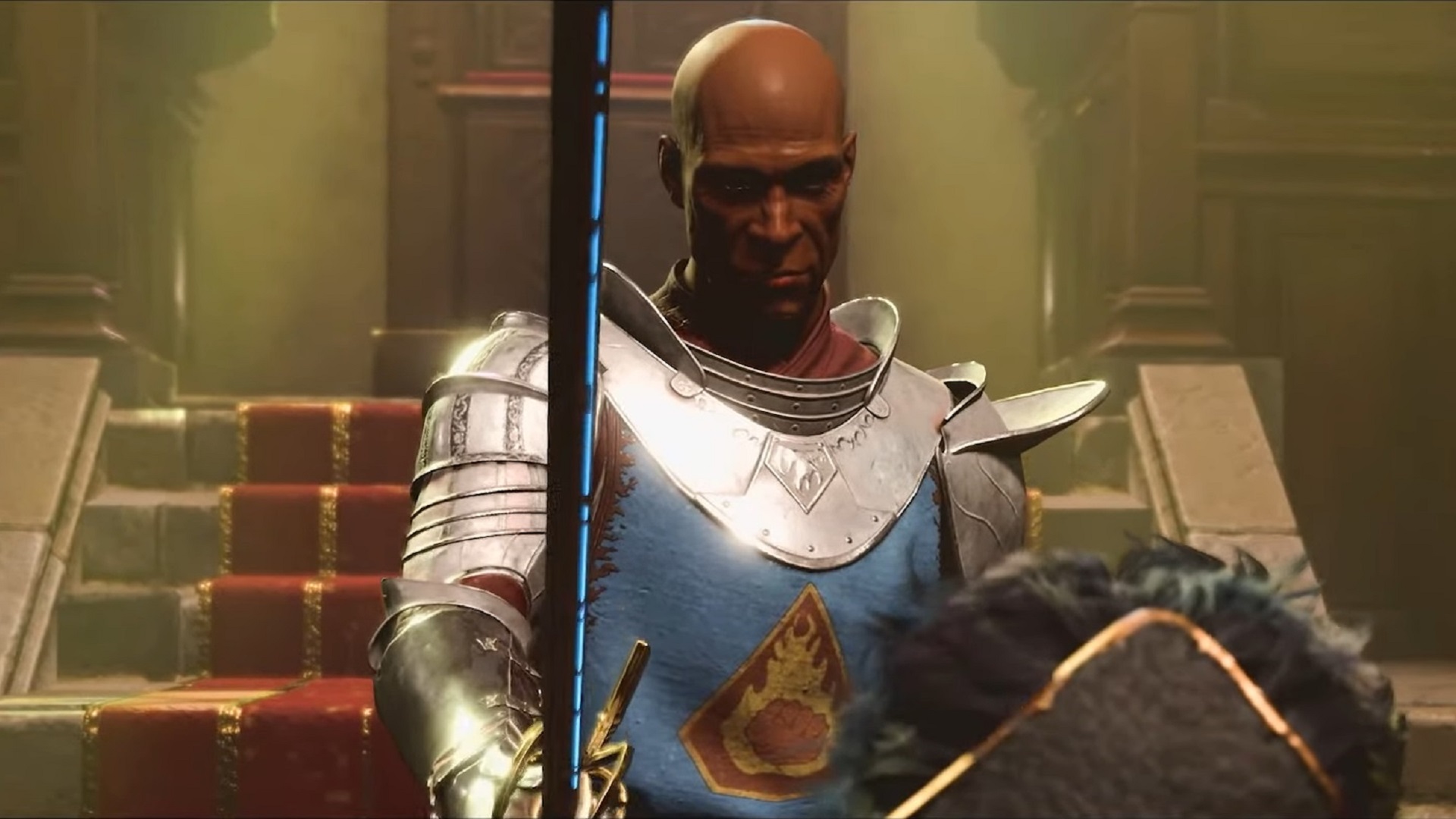
Paladin 2 / Sorcerer 10 ⚔️👼️
- Choose this if you need: A knight errant-flavored spellsword. A Kensai/Mage for the 2020s.
- Key Skills: Divine Smite + Sorcerer spell slots, Haste, *Inexperienced Flame Blade, *Booming Blade
- Precedence Attributes: Charisma, Energy
- Secondary Attributes: Structure, Dexterity
- Non-combat functionality: Fairly good! Positively get proficiency in Persuade.
- Beneficial beginning race: Half-Elf, Half-Orc, Zariel Tiefling, Dragonborn
- Leveling order: Take your two ranges of Pally, then all Sorcerer, child.
That is the one with all of the hubbub round it. I detect the identical “D&D Discussion board Man” power because the dread Kensai/Mage dual-class construct from Baldur’s Gate 2. Primarily, the concept is that Paladins and Sorcerers each run on Charisma, letting you crank one stat for each Sorcerer crowd management, injury, and buffs, in addition to Paladin assist skills.
The jewel within the crown is the Paladin’s Divine Smite capability, which provides wherever from 2-6d8 injury (2-48 injury relying on the spell slot degree you employ and whether or not your enemy is undead) on prime of your base injury. Moreover, Paladins and Sorcerers, with their excessive Charisma and ideally proficiency in Persuade make an amazing “face” for the celebration, opening up non-combat-reliant quest options.
The massive query is whether or not Larian will implement the tabletop cantrips Inexperienced Flame Blade and Booming Blade. Primarily, the spells perform as full melee assaults in change for cantrip slots, making up for the standard Paladin 2 / Sorcerer 10’s lack of Further Assault at Paladin degree 5, and even giving Sorcadins bonus melee assaults at an earlier level within the sport. The cantrips didn’t seem in early entry, and Larian has not confirmed their standing within the last sport both means. Their presence will make or break the Paladin 2 / Sorcerer 10.
Absent these cantrips, this particular model of the construct turns into so much much less fascinating, however worry not, we now have backups. There’s already an early entry mod so as to add the cantrips again within the sport, and it presumably will not take an excessive amount of tinkering to get that working with the discharge construct. In any other case, a Paladin 6 / Sorcerer 6 can be extra amenable to a melee cantrip-less world, taking part in the primary half of the sport as a straight Paladin, then buying and selling your excessive degree skills for Divine Smite spell slots and extra restricted spell utility.
Contemplate additionally a Paladin 2 / Blade or Valour Bard 10 for Charisma casting spell slots and additional assault, or a Paladin 2 / Warlock 10 relying on how a lot of the tabletop Hexblade/Pact of the Blade subclass makes it to BG3 as appears to be implied by this interview with BG3 techniques designer Nick Pechenin in Italian publication Multiplayer.it.
Subclasses are much less central to this construct, however I might lean towards Oath of Vengeance or Oathbreaker Paladins for his or her injury focus and Draconic Bloodline or Wild Magic Sorcerer.
Tanky Battlemage
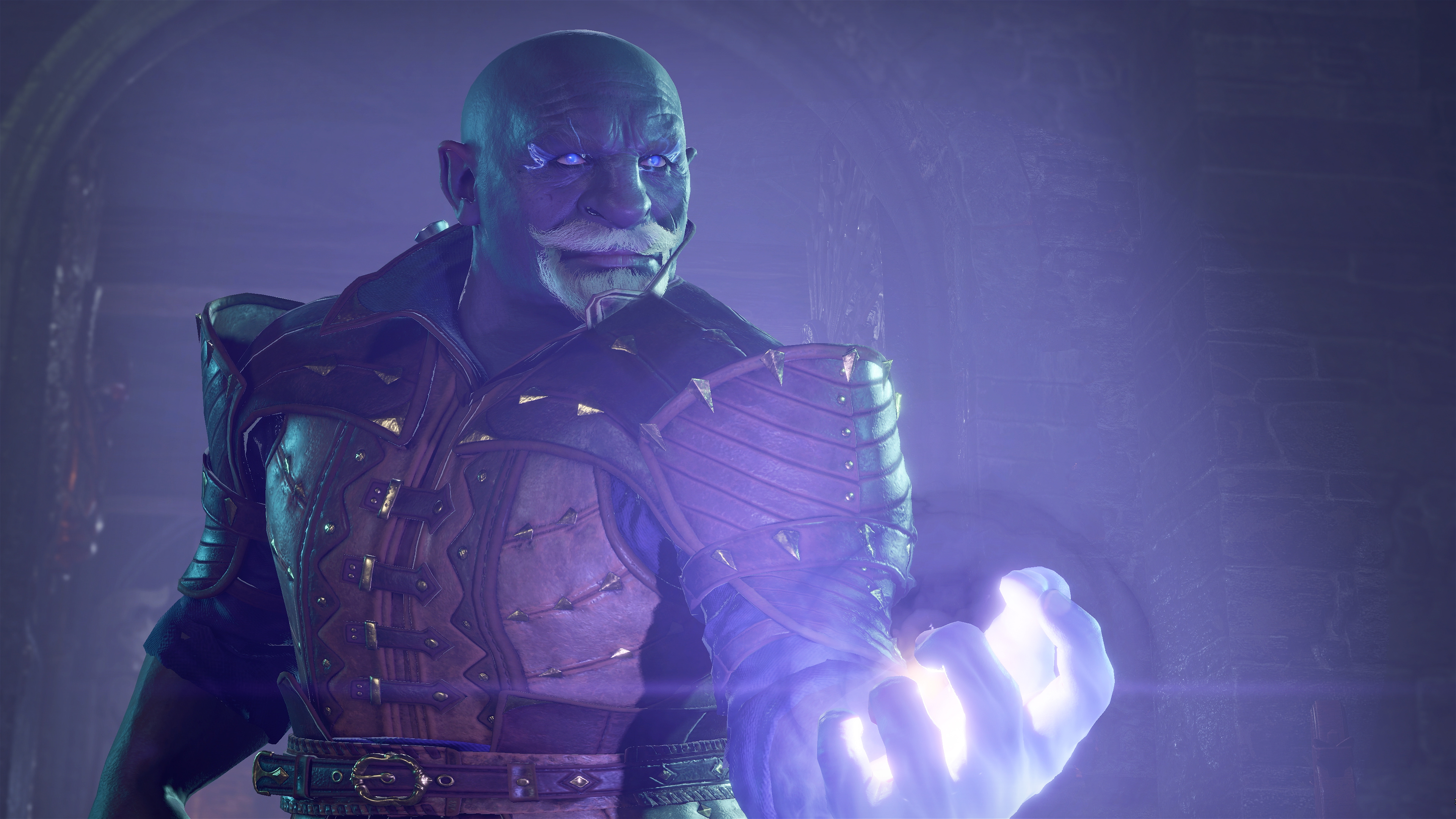
Fighter 2 / Wizard 10 🛡️🧙
- Choose this if you need: A battlemage, a personality primarily centered on spellcasting, however with heavy armor, a protect, and melee competency serving to them with survivability.
- Key Skills: Wizard spells, Heavy Armor Proficiency, Martial Weapon Proficiency, Protect Proficiency, Motion Surge.
- Precedence Attributes: Intelligence
- Secondary Attributes: Structure, *Dexterity
- Non-combat functionality: Not as nice, you’d must carve out a spot for it with talent proficiency ASIs.
- Beneficial beginning race: Excessive Elf, Githyanki, Gnome, Asmodeus or Mephistopheles Tiefling
- Leveling order: One or two ranges of Fighter, relying on if you need Motion Surge, then all Wizard.
Many courses, together with spellcasters, will discover quite a lot of profit in taking only one or two ranges of Fighter at the beginning of their construct because of their bevy of proficiencies opening up gear choices for extra restricted courses.
All of these might show helpful, particularly to an otherwise-easy- to- kill Wizard, and at degree 2 Fighters achieve Motion Surge, an additional predominant motion usable as soon as per brief relaxation. The bonus motion and proficiencies might show helpful to any variety of character roles.
A Fighter 1/ Wizard 11 would typically be tougher to kill than a straight Wiz, with extra choices when cornered by enemies, whereas solely delaying and never shedding endgame spells. Bump that Fighter degree to 2, and also you lose sixth circle spells in favor of Motion Surge all through the sport.
You’d principally play this as a straight Wizard, buying and selling pure glass cannon spell energy for slightly extra versatility when cornered. In early entry, heavy armor doesn’t require a minimal power to make use of, so you could think about bumping your Dexterity to 14 and specializing in finesse weapons, a protect, and no matter armor, medium or heavy, gives you with the best armor class or AC.
Darkish Brotherhood Murderer Edgelord
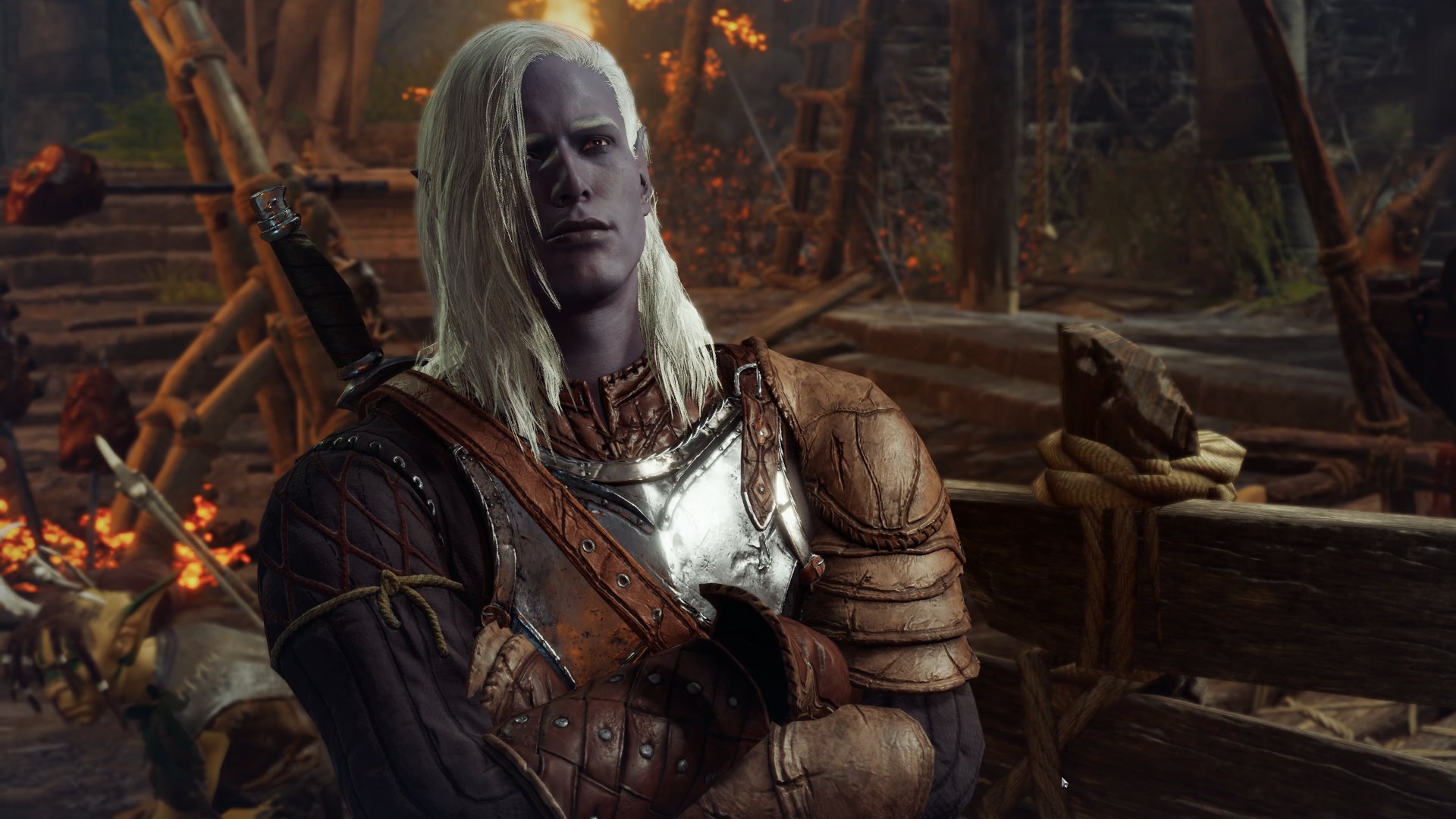
Gloom Stalker Ranger 7 / Murderer Rogue 3 / Fighter 2 🥷
- Choose this if you need: Your basic stealth/DPS murderer, both with twin finesse weapons or a bow. A powerful potential Astarion construct.
- Key Skills: Dread Ambusher, Assassinate, Motion Surge
- Precedence Attributes: Dexterity
- Secondary Attributes: Structure, Knowledge, *Charisma (if performing as celebration face)
- Non-combat functionality: First rate to glorious relying on whether or not you begin as a Ranger or a Rogue.
- Beneficial beginning race: Half-Elf, Wooden Elf, Drow, Halfling
- Leveling order (fight powergaming): Ranger to degree 5, then three ranges of Rogue, two of Fighter, then end the sport with Ranger.
- Leveling order (extra abilities and non-combat potential): Rogue at first degree, then your 5 Ranger ranges, two extra Rogue, two Fighter, and end as Ranger.
That is one I am notably excited for, a probably very robust take in your basic “from the shadows” twin wield DPS ambusher. The Ranger’s Gloom Stalker subclass has an extremely highly effective tent pole capability: Dread Ambusher, which makes your Knowledge bonus go towards your initiative rolls, supplying you with the next likelihood of attacking first in fight, along with different large benefits within the first spherical of a fight encounter listed down beneath.
Murderer subclass Rogues achieve the Assassinate capability, which provides distinctive bonuses in opposition to enemies who have not taken a flip in fight but, in addition to bonus sneak assault injury. Mix the 2 collectively, and start as many fights as potential by stealthing proper as much as precedence enemies, supplying you with the next benefits within the first (and usually most impactful) spherical of a battle:
- Bonus motion velocity
- An additional assault with 1d8 bonus injury (so three assaults whole with Further Assault, 4 with Further Assault and an offhand weapon, and another per brief relaxation on prime of these with Fighter’s Motion Surge).
- Benefit in your assault rolls.
- Automated crucial hits.
- 2d6 Sneak Assault injury on one among your assaults
You may wish to watch out about getting caught out from the remainder of your celebration, however this construct provides you an extremely robust “alpha strike” in the beginning of fight, and will probably allow you to simply delete enemy spellcasters or ranged injury sellers behind their strains. After that first spherical of fight, you continue to have a high-damage Ranger/Rogue to carry their very own and even retreat again into the shadows.
With twin finesse melee weapons like Daggers, Rapiers, Scimitars, or Shortswords, this construct positive aspects offhand assaults and that basic murderer aptitude, however you may additionally wish to think about a ranged model with a Longbow: you lose that offhand assault Bonus Motion (most impactful within the alpha strike opening), however there could also be higher makes use of on your Bonus Motion anyway (like hiding), and a ranged murderer would have a neater time entering into place and nailing precedence targets with out being noticed.
Dashing degree 5 Ranger for Further Assault is perfect for fight, however I am contemplating this construct for my predominant character, and I am a sucker for that candy, candy non-combat utility. To that finish, I might begin with one degree of Rogue to benefit from their full talent proficiencies for necessities like Stealth, Persuade, and Sleight of Hand, delaying Further Assault and Dread Ambusher by one degree.
Fairly A lot Simply An Arc Warlock From Future
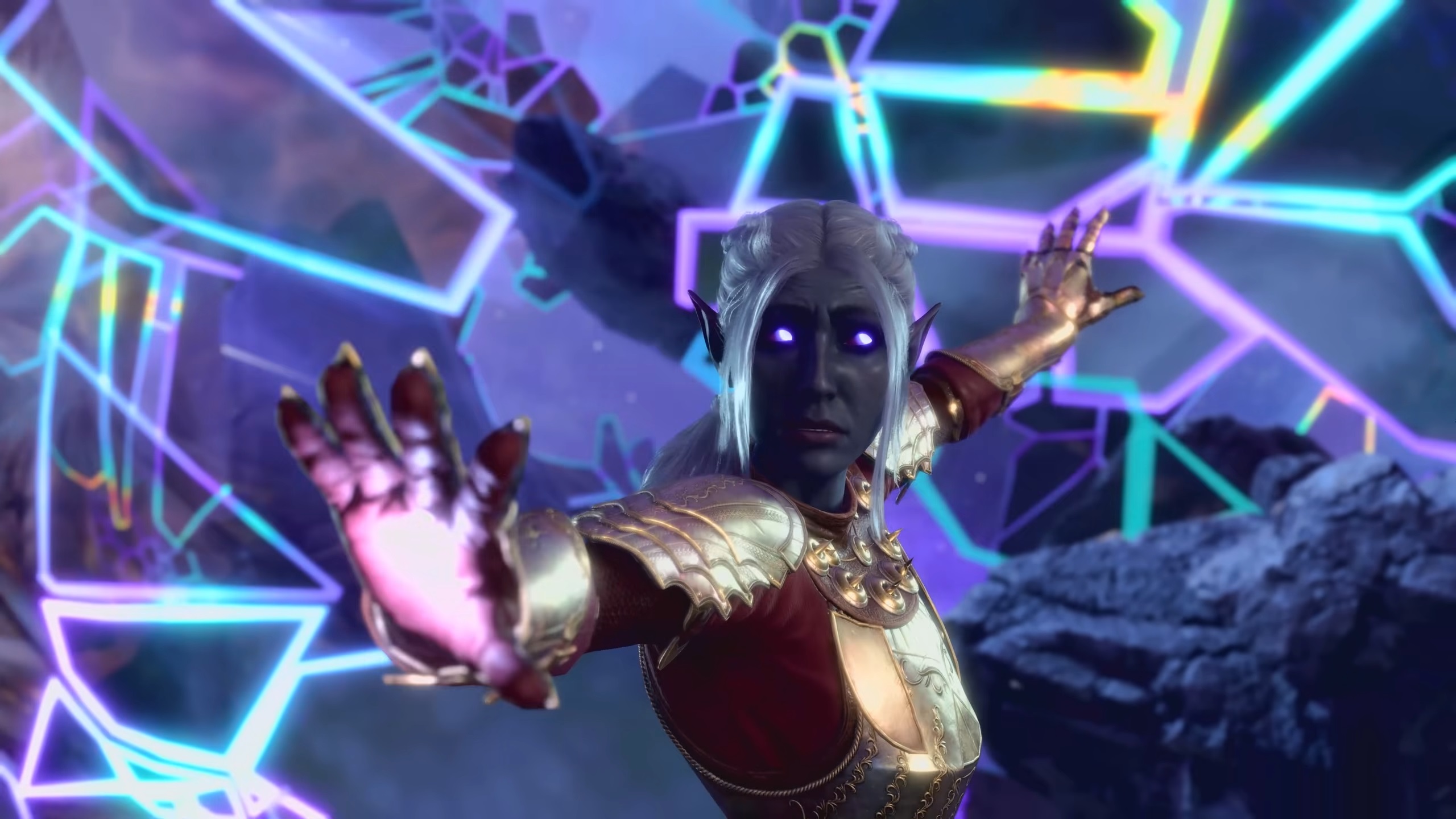
Tempest Area Cleric 2 / Storm Sorcerer 10 ⚡
- Choose this if you need: The lightning grasp. Suppose the Arc Warlocks from Future or Emperor Palpatine from Star Wars.
- Key Skills: Sorcerer spells (notably Lightning Bolt), Wrath of the Storm, Channel Divinity: Harmful Wrath, Cleric weapon/armor proficiencies
- Main Attributes: Charisma
- Secondary Attributes: Structure, Dexterity
- Non-combat functionality: Fairly good with the Sorc’s excessive Charisma, even higher should you get Persuasion proficiency.
- Beneficial beginning race: Half-Elf, Drow, Zariel Tiefling, Dragonborn
- Leveling order: Two to Cleric then ten Sorcerer.
You take the 2 lightning guys, and also you’re mashing them collectively. Your two predominant benefits over an ordinary Storm Sorcerer are extra survivability usually—Clerics get medium armor and shields—and the Tempest Cleric’s lightning synergies with Storm Sorcerer. Tempest Clerics achieve Wrath of the Storm, permitting them to retaliate in opposition to melee assailants with an enormous ‘ole zap, and Channel Divinity: Harmful Wrath. That final one permits Storm Clerics to make use of their Channel Divinity factors to deal max injury with a lightning or thunder spell.
Channel Divinity can solely be used as soon as per brief relaxation with this construct, but it surely’ll flip spells just like the third degree forged, Lightning Bolt, into an excellent nuke you may at all times have in your again pocket. The Tempest Cleric / Storm Sorcerer is perhaps extra of a lateral transfer over a pure Sorcerer, however gives a enjoyable theme and playstyle, in addition to related advantages to a Fighter dip.
You are going to be relying in your Sorcerer spells greater than Cleric, however at character creation I nonetheless would need not less than 14 Knowledge to benefit from Wrath of the Storm. In any other case, it is Charisma all day, as excessive because it’ll go. Just like the Fighter/Wizard, I might go for Dexterity over Energy, finesse weapons like Rapiers, and a Protect with Medium Armor to maximise survivability and get probably the most out of the 2 Cleric ranges.
Hulk Smash
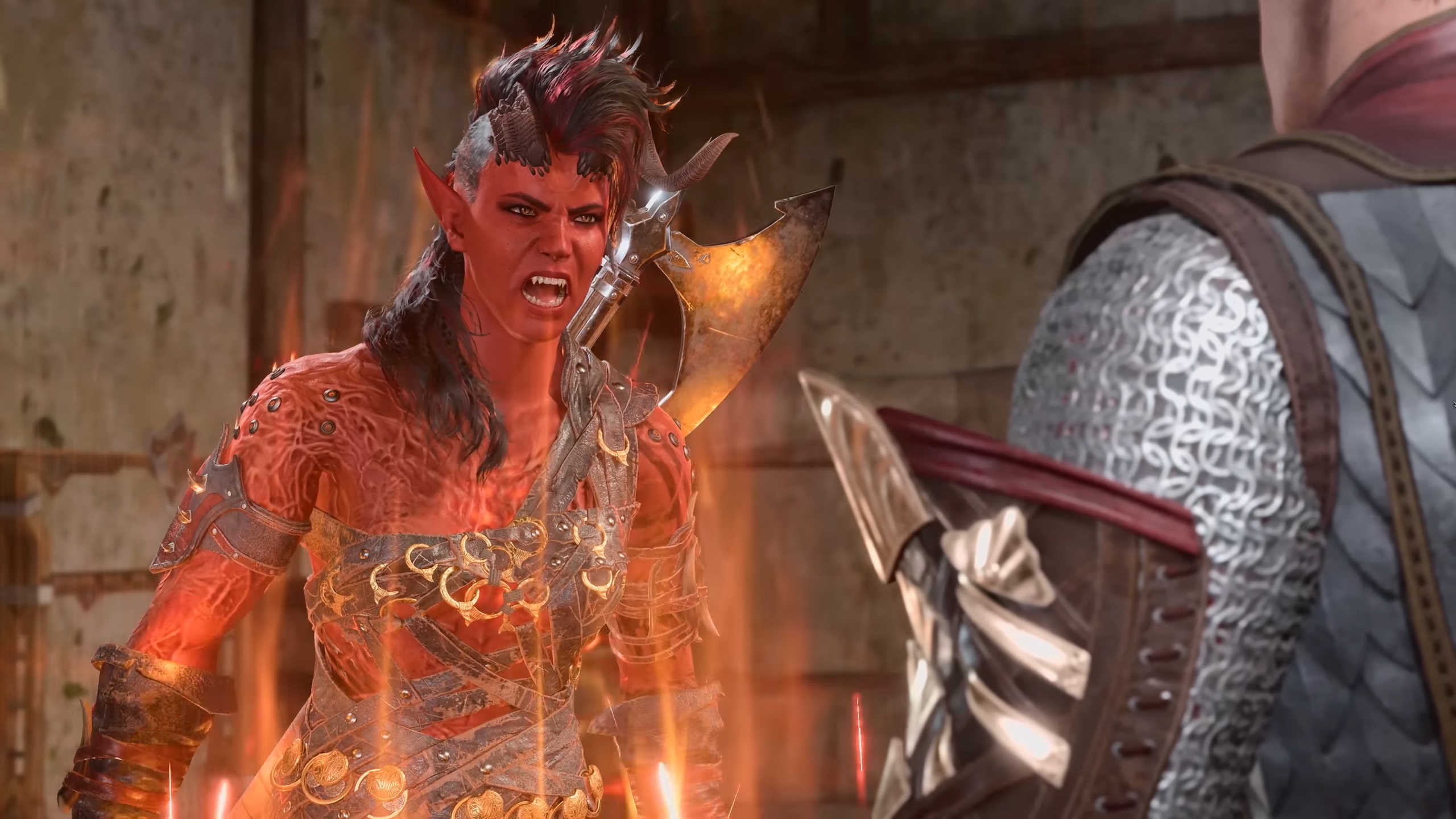
Barbarian 9 / Champion Fighter 3 🪓💪😤
- Choose this if you need: The tankiest, beefiest, two-handed crucial hits. This construct would work for Karlach.
- Key Skills: Motion Surge, Improved Essential, Unarmored Protection, Nice Weapon Grasp
- Main Attributes: Structure, Energy, Dexterity
- Secondary Attributes: No can do, hoss.
- Non-combat functionality: lol
- Beneficial beginning race: Half-Orc, Githyanki
- Leveling order: Barbarian to degree 5, three ranges of Fighter, then Barbarian all the way in which.
This construct is very simple: basically, you sacrifice high-level Barbarian skills like Relentless Rage (preserve preventing getting ready to demise just like a Half-Orc) and the Barbarian subclasses’ degree 10 skills in favor of Motion Surge and the Champion’s Improved Essential making it simpler to land crucial hits, and that latter capability additionally dovetails properly with degree 9 Barbarians’ elevated crucial injury.
Since Barbarians get Unarmored Protection (add Dexterity and Structure bonuses to AC when not sporting armor), they do not profit as a lot from beginning degree 1 as a fighter for Heavy Armor Proficiency. With that in thoughts, a fast rush to degree 5 as a Barbarian for Further Assault is the secret, adopted by your three fighter ranges for Motion Surge and Improved Essential. The Barbarian subclass you decide is much less essential to the core of the construct—Berserker looks as if the optimum alternative for mondo injury, however we expect Wild Magic Barbarians seem like some of the enjoyable subclasses in Baldur’s Gate 3.
Structure, Energy, and Dexterity shall be crucial for shoring up a Barbarian / Champion’s injury and defenses, with little room for namby pamby niceties like Intelligence or Charisma. Half-Orcs and Githyanki lend themselves to the construct, and Karlach is certainly match as nicely, both as a companion in your celebration or your alternative of origin character. For ASI picks, Nice Weapon Grasp is a lock, whereas Polearm Grasp (once more, relying on weapon alternative, this might combo with Nice Weapon Grasp and specializing in weapons like glaives) or a straight Capacity Rating Enchancment to Energy, Dexterity, and/or Structure stand out to me nearly as good choices for the Barbarian’s second ASI.
[ad_2]
Source link


